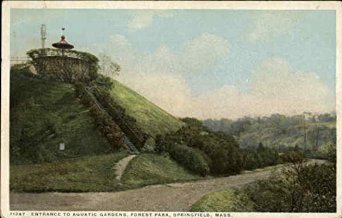I’ve addressed Maryland itself in an earlier blog, but
have yet to discuss its University, which is where I went for undergrad from
Fall 1986 (F86) to Summer 1990 (SS90).
College
Park. UMCP is the flagship campus, located
northeast of DC within the Beltway, straddling Route 1. The campus is actually fairly large, and continues
to grow. The northeast section has a
huge agricultural zone full of long barns, the kind you find at agricultural
fairs. My dad told me that UM was quite advanced
in agricultural technology, something about breeding better Thanksgiving
turkeys or juicier pigs. Something like
that.
There’s also UM-Eastern Shore, UM-Baltimore Campus, UM-Baltimore
County (Catonsville), and UM-University College. UM-UC covers the overseas operations around
the world, primarily on-base education at US military bases. The Munich campus closed in 1992. From what I understand, although California’s
state university system dwarfs Maryland’s, excluding UM-UC, if you add in UM-UC,
Maryland’s system exceeds California’s.
History. The campus began in 1856, with Morrill Hall
as the oldest – and it looks it, almost “H.P. Lovecraft Hall”. It turned into Maryland Agricultural College
(MAC), with mandatory ROTC, until it finally renamed University of Maryland in
1920.
Majors. I started out as a government & politics
(GVPT) major, with most of my classes in LeFrak Hall. By sophomore year I realized that business
and government complemented each other, so I added a second curriculum of general
business (BMGT) to get a second degree, for 156 credits in 4 years. To do this I had to take summer courses after
sophomore year (1988) and two more courses after spring semester of senior year
(1990), but still managed to do it, so I could start law school in Fall 1990 at
George Mason. I actually applied for the
University of Maryland law school, but was not accepted. My diplomas, a B.A. in GVPT and B.S. in BMGT,
are dated August 1990, with the commencement ceremony in December 1990.
Dorms. The UCMP campus has 9 high rise dorms (plus 2
low-rise), of which I was in Hagerstown Hall for my freshman year (F86/S87). The North Hill dorms were somewhat run down
when I was there; I knew people in Somerset Hall, and a friend of mine – not an
asshole – lived in Wicomico Hall. I
moved to Talbot Hall for sophomore year (F87/S88) and fall of junior year (F88),
then to Montgomery Hall (South Hill) for spring (S89) and senior year (F89/S90). Plus there are Old Leonardtown and New
Leonardtown apartments on the other side of Route 1, just behind Frat Row. I stayed in New Leonardtown during summer
school, SS I&II 1988, and SSI in 1990.
As you can see from the pictures,
the campus is sprawled out and very attractive.
Brief bits of “National Treasure II” (the Quad) and “St Elmo’s Fire”
(Frat Row) are filmed at UMCP.
Sophomore and junior years meant 4 different roommates,
all 4 being unpleasant experiences.
Freshman year was Mike, who was fine; and senior year I had a huge
single, in a suite with a bunch of guys I got along with fine. Aside from Gene and I, they were all Theta
Chi brothers (Gene, where are you?). By
the way, my brother also went to UMCP, a year behind me, and during my senior
year – his junior year – he was also in Montgomery Hall, in the middle
section. My sister went to UM, had to
drop out when she and her first husband moved to Arizona, and came back later
and finished that off. So our family has
no less than three UMCP graduates.
Terps. Our mascot, technically the Terrapins (a
small aquatic turtle which no one fears) and personified by Testudo at sports
events. UMCP won the NCAA basketball
tournament in 2002. Neil O’Donnell was
our QB while I was there, before going on to the Steelers. Someone said our lacrosse program was
supposed to be good. I have no
clue. We were in the Atlantic Coast
Conference, competing with UVA, WVU, Wake Forest, UNC, NC State, Duke, and
Clemson, but now we’re in the BIG 10, a group I’ve ignored because until
recently, UM was not part of it. I can’t
say I follow Maryland that zealously – if there’s a game on a TV at the gym I’ll
pay attention.
In all the time I was at UM living on campus, I maybe went
to two football games at Byrd Stadium and one basketball game at Cole Field
House – my usual reason for visiting either was to jog (Cole) or get horribly
sunburned (Byrd Stadium). Richie
Coliseum was where we saw concerts:
Black Sabbath in 1994, and Megadeth earlier.
Diamondback. The school newspaper. I remember the comics: Clyde (Al Via), Pat Schaefer, plus the
overindulgent Eric Dunn & his “aren’t I cool?” crap. After I graduated Aaron McGruder started off
his own strip which later became The Boondocks.
And there were our competing editorialists, Eron Shosteck (the GOP point
of view, somewhat of a minority at uber-liberal UMCP, where you could fit the
College Republicans in one room), and Dave Bitet, giving us the Opposition
perspective, since the White House was in Republican hands during my time at
UMCP – 1986-1990, i.e. Ronald Reagan and then George H.W. Bush, the father of
the none-too-popular George W. Bush and his politically flailing brother
Jeb.
Alumni. Jim
Henson (Muppet guy) is the most famous.
I suppose Larry David (Seinfeld & Curb Your Enthusiasm) is #2,
followed by the guy who wrote The Wire (David Simon). Carly Fiorina, Connie Chung, and Oprah’s
friend Gayle, are also UMCP alumni.



